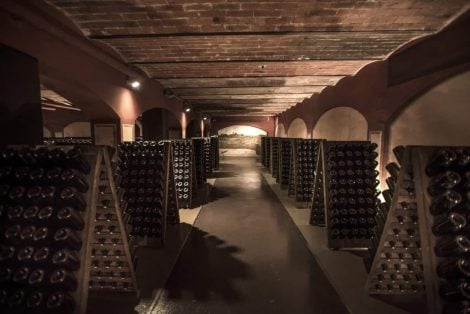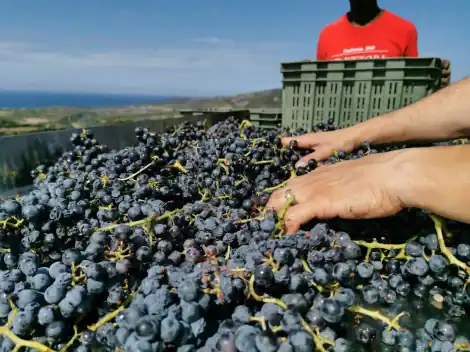"In two or three years, we’ll have extra virgin olive oil. The climate is good, and even the land appears suitable for olive cultivation. Consider that these fields were reclaimed by the Dutch in the 1600s, cultivated with grain and beets since then, and lie just a few meters below sea level." What Pietro Leone, owner of Oleificio Cericola in Foggia, is describing is not a new grove in Apulia or other parts of Italy, but rather the first olive grove designed and built in the United Kingdom. Leone explains that this is a project commissioned by David Hoyles, owner of the agricultural enterprise The English Olive Co., located in Spalding, around a hundred kilometers north of Cambridge. A grove like this could only be realized because, in the past ten years, the average temperature in that area has increased by at least two degrees. A few years ago, this would have been unthinkable to any agronomist. However, Leone, who was tasked with providing technical advice for the establishment of the grove, quickly recognized the potential of this plain.
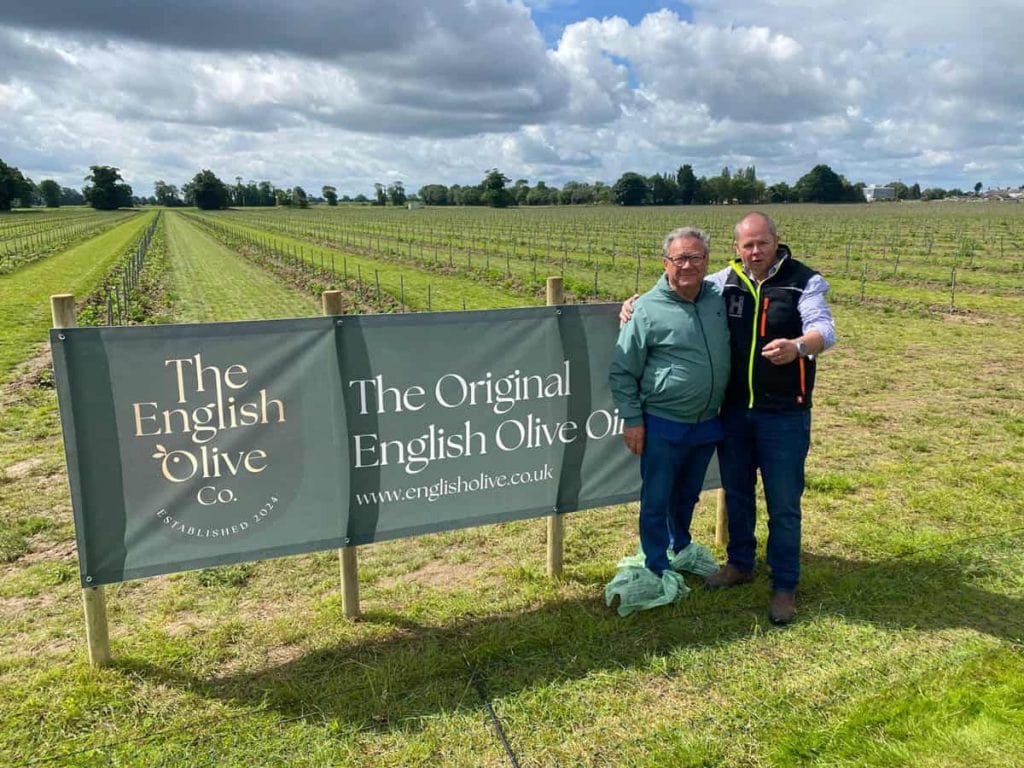
Pietro Leone and Englishman David Hoyles: the first super-intensive olive grove in Spalding, England
The first English mill
"We’re also going to build the first mill in this area soon. I am convinced that many will follow this path in this region; the conditions are right," adds Leone. For now, the grove comprises about 20,000 trees across a dozen hectares, using a super-intensive planting system that hosts cultivars such as Arbequina, Arbosana, and Lecciana. The goal of the English farmer, however, is to cover the entire 170-hectare property. The fact that the Old Continent is at the center of an emerging agricultural and landscape transformation is becoming increasingly clear. In Sicily, desertification is advancing, exacerbated by intensely dry summers like the one just past. Meanwhile, in regions such as Bordeaux, the French Ministry of Agriculture announced in June 2023 an allocation of 57 million euros to uproot about 9,500 hectares of vineyards in the Bordeaux region, with additional funds set aside to encourage producers to switch to other crops, such as olives. In short, less Cabernet and more "huile d'olive."
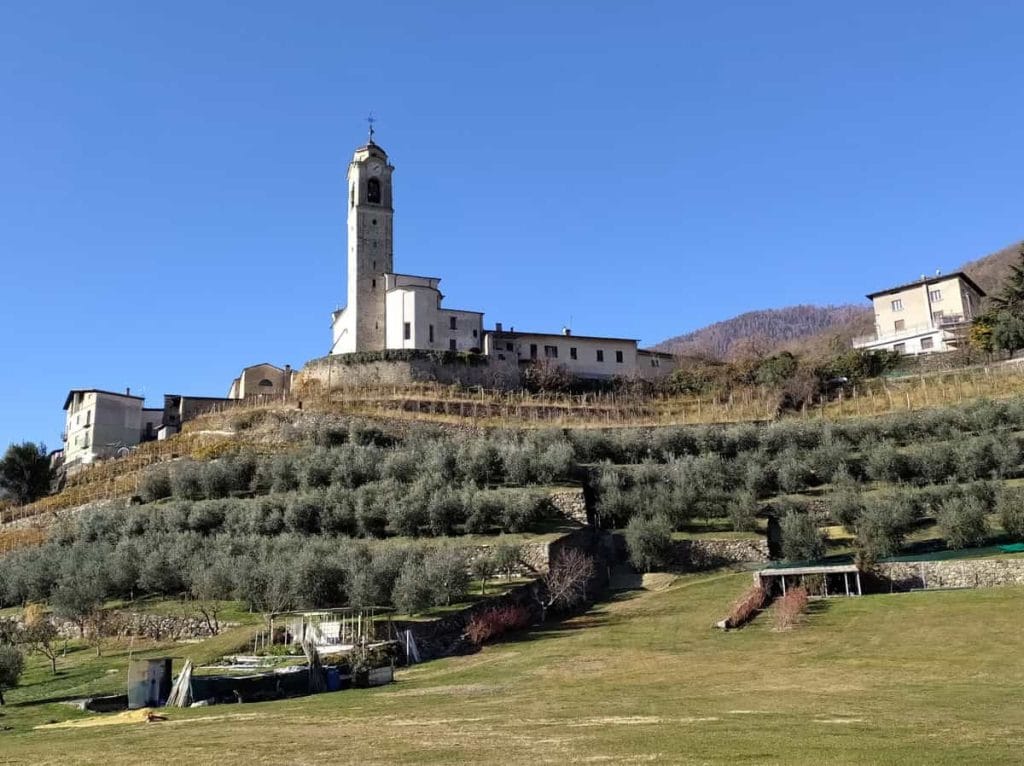
Valtellina: terraced olive grove in Poggiridenti, province of Sondrio
Italy also pushes olive groves northward
Even in Italy, albeit with the slow pace imposed by olive growing, signs of change are becoming increasingly evident. Although the olive tree is more resistant to water scarcity than many other plants, in years like this one, the lack of water and high temperatures have put olive production to the test, especially in southern Italy, which produces about 70% of the national total. In contrast, some areas in the North, until now never considered particularly suitable for olive oil production, have seen an abundance of water. The rise in winter and spring temperatures is creating the foundations for olive production that, while still in its infancy, propels us into a future full of promise. One such area is Valtellina, where olive cultivation has been present since the 1990s but has recently developed thanks to favorable climatic conditions. Elena Fay of Sandro Fay Winery, who does not cultivate olives herself, notes that olive trees have increased significantly in recent years in the area.
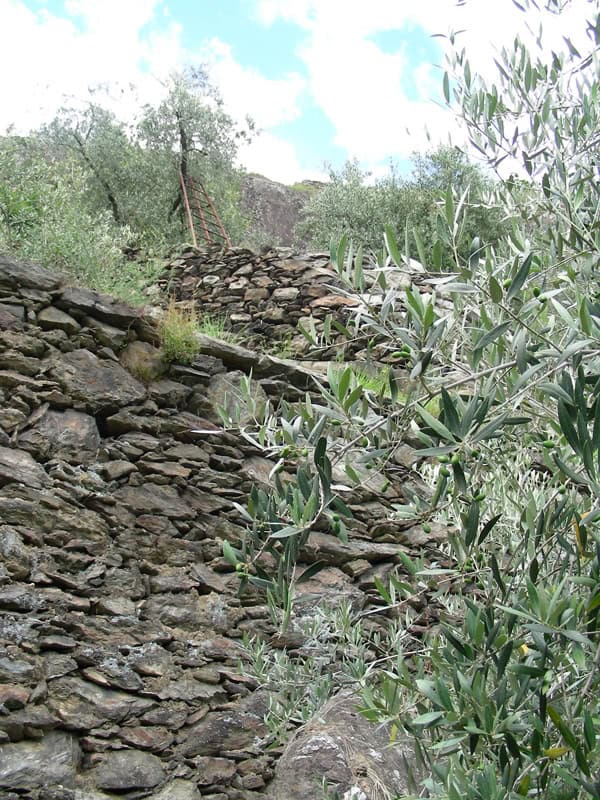
Valtellina: olive trees reappear among the dry-stone walls
The olive tree's help for winemakers in Valtellina
Ivano Foianini, a technician with the Fojanini Foundation in Sondrio, which has long assisted farmers with olive, fruit, and viticulture production, explains the new olive-growing trend in this area, considered almost "mountainous." "Olive cultivation is growing here, and it has not encroached on the areas for Valtellina's great wines. In fact, it benefits winemakers by helping to counter the spread of forests, which would otherwise have a significant impact on the vineyards. Furthermore, in an area like this, the presence of olive trees helps prevent the risk of hydrogeological instability." While this isn’t yet a large-scale production, it is experiencing steady growth. "In terms of numbers, we have a few farms with around 400-500 olive trees on average. A recent census counted approximately 15,000 trees in the province of Sondrio, covering about a hundred hectares with an estimated yield of around 1,000 quintals, and the reality here is evolving continuously," explains Foianini. It’s not yet possible to speak of profitable olive cultivation here, but the technician envisions a future where consumers—and even farmers—come to recognize that Valtellina produces oils that can rival those of other parts of Italy.
Experimental field and new mill in Sondrio
The Foundation's experimental field, established in 1996, primarily houses Tuscan varieties such as Leccino, Frantoio, Pendolino, and Maurino. Trials have also been conducted with other southern Italian varieties, such as Coratina, which seem to adapt well to the terrain and climate. "In the 1990s, olive cultivation wasn’t widely believed in, and no one approached it as an entrepreneurial project. In recent years, however, we haven't experienced particularly cold winters, and the olive tree has become a plant that arrived in the right place at the right time. A decade after planting these trees, we’ve realized the production is good, and so is the oil quality," says the Valtellina technician. A new mill is also set to open at the Foundation's headquarters in Sondrio: "Construction will start at the beginning of 2025, and we aim to have it operational by the 2025/2026 olive oil campaign," Foianini explains.
Olives and oil return to Piedmont
A more established reality with a longer history is that of Piedmont. Though it doesn’t reach the production levels of southern Italy, significant and notable production extends from the province of Alessandria to the areas of Asti and nearby Monferrato. Fulvio Castagna, president of the Piedmontese Olive Growers Association, explains the peculiarities of this olive-growing region: "In reality, olive cultivation in Piedmont is a rediscovery, as it was abandoned during the Little Ice Age around the 1700s, only to be revived about 25 years ago." Various areas of the region are involved: in Asti, for example, hilly regions are experiencing shifts, with vineyards moving from lower to mid-level zones where the climate is less stifling for the plants. Higher, drier hilltops, unsuitable for vines, are being planted with olives. In Monferrato, for instance, olives are being planted on the higher parts. Besides these areas, other “extreme” areas are beginning to see the olive tree, such as Canavese and Pinerolo, and some trees are even attempting to take root in the Susa Valley. Generally, primarily Tuscan varieties such as Leccino, Pendolino, Leccio del Corno, and Frantoio are well-suited to the terrain here.
A new mill for Valle d’Aosta too
Fulvio Castagna’s association also includes the neighboring Aosta Valley, where, as he mentions, local growers would like to open a mill as well. Despite small-scale production (around 4,000 trees in the entire region), they currently have to press their olives in Piedmont. The climate crisis is changing landscapes and cultivation, forcing new solutions for land management: "When I look at these hills, I see chestnut trees dying. In such a drought-ridden situation with irregular rainfall, the problem is now obvious. Olive trees, on the other hand, would survive in dry winters like the last one. I believe that in the coming years, the landscape will change, with fewer chestnut trees and more olive trees."


 Little Italy in New York is Italian in name only. The disastrous effects of mass tourism
Little Italy in New York is Italian in name only. The disastrous effects of mass tourism "Trump is bullying Europe. With US tariffs at 30%, the consequences will be similar to the methanol crisis." Marco Caprai’s warning
"Trump is bullying Europe. With US tariffs at 30%, the consequences will be similar to the methanol crisis." Marco Caprai’s warning "Trump's tariffs? It's no longer time to be diplomatic. Europe must respond firmly." Matteo Lunelli speaks
"Trump's tariffs? It's no longer time to be diplomatic. Europe must respond firmly." Matteo Lunelli speaks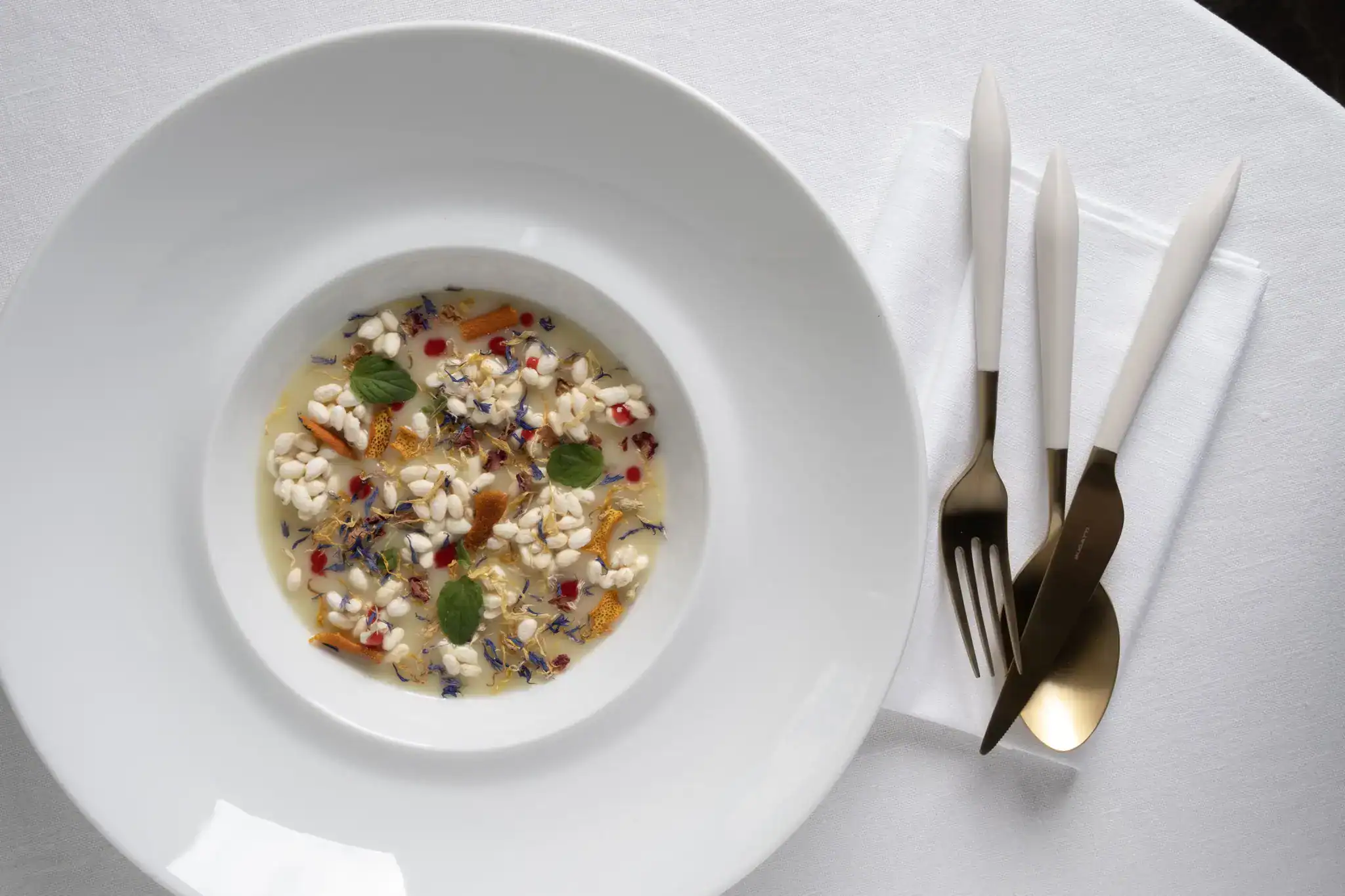 The Michelin star king of Liguria opens a new restaurant: here is Luv by Mauro Ricciardi
The Michelin star king of Liguria opens a new restaurant: here is Luv by Mauro Ricciardi